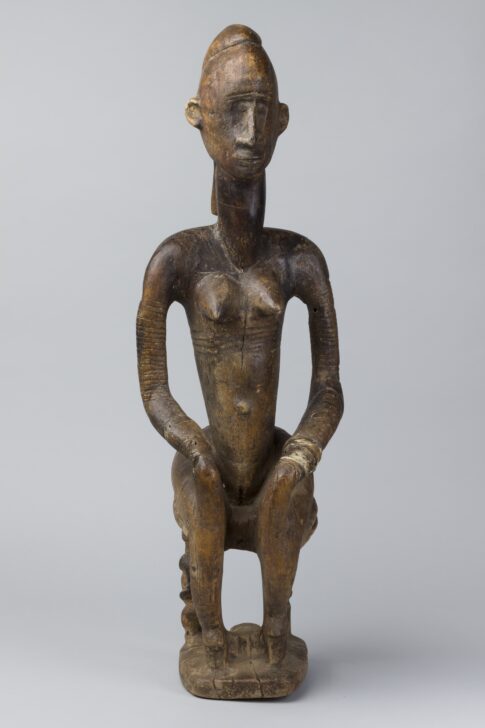Female Figure
Dogon

Description
Subject Matter:
Dogon sculptures were often created for religious purposes, housed in shrines and placed upon altars to promote the fertility of both land and people. Dogon figure style diverges between tall and slim bodies with oval-shaped heads, and short, heavier figures. The concept of ancestral lineage is crucial in Dogon culture; sculptures are created by blacksmiths - revered in Dogon culture - and are used for ceremonial and initiation purposes. This dual figure represents a nommo, the offspring of the god Amma, merging with the head of a hogon, demonstrating man’s ascent towards heaven and the grounding of the spirit to the earth.
Sources:
Metropolitan Museum of Art. Museum label for Male Figure With Raised Arms. New York, NY.
Helene Leloup. "Dogon Figure Styles." African Arts 22, no. 1 (1988).
Roslyn Adele Walker. The Arts of Africa at the Dallas Museum of Art. New Haven, CT: Yale University Press, 2009.
Ezra, Kate. Art of the Dogon: Selections from the Lester Wunderman Collection. New York: Metropolitan Museum of Art, 1988.
Laude, Jean. African Art of the Dogon. New York: The Viking Press, 1973.
Physical Description:
Female figure seated on a stool carved from a single piece of wood. The figure has horizontal marks on the chest and upper arms. The figure's head is long and thin with protruding features and carved 'hair' extending over the head and down the back of the neck. The figure's left arm has remnants of a cuff made of animal hide. The stool is four-legged and the back legs are carved figures.
Usage Rights:
If you are interested in using an image for a publication, please visit https://umma.umich.edu/request-image/ for more information and to fill out the online Image Rights and Reproductions Request Form.